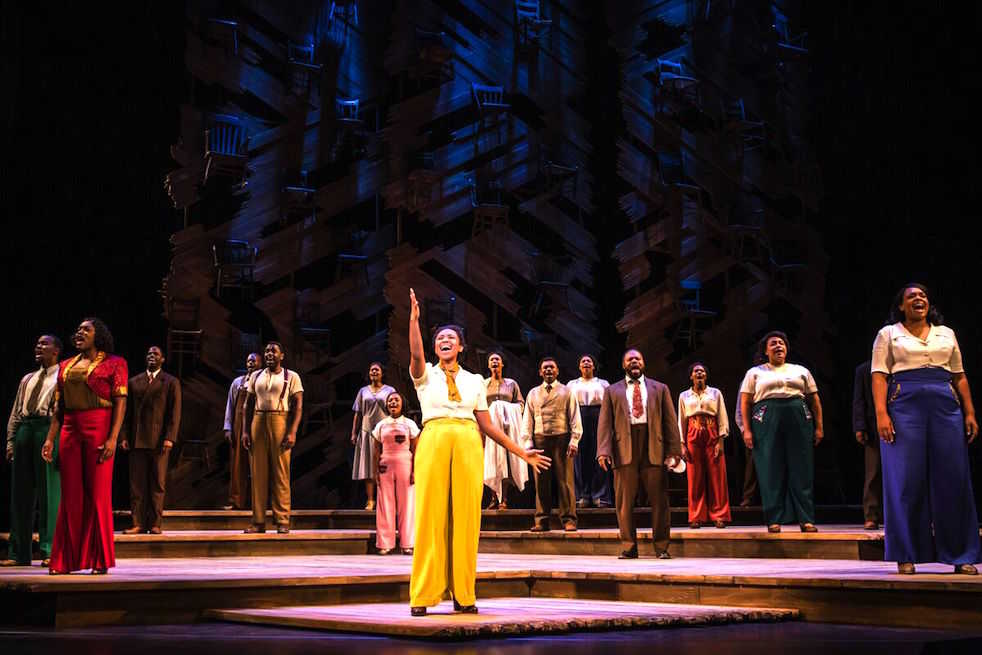The 2016 Tony Award Winning musical, “The Color Purple,” has found its way to Atlanta’s own Fabulous Fox Theatre. The musical depicts the tragic and joyous story of Celie (Adrianna Hicks), a young woman stuck in an age where her choices are often not her own.
Set in 1928 Georgia, the musical “re-imagines” Alice Walker’s novel about Celie’s life as she triumphs over the problems that African American women faced in everyday life.
Other characters, such as Shug Avery (Carla R. Stewart), Sofia (Carrie Compere) and Mister (Gavin Gregory), demonstrate or experience other issues like incest, poverty, sexism, racism, abuse and sexuality.
The actors achieved greatness and left audiences reeling with their vocal range and sheer talent. Every voice fit the passion of the characters that they portrayed, and the supporting ensemble was phenomenal. There was no note out of tune, no choreography out of time and no prop out of place.
Each cast member brought vivid light to the character that they played and marvelously
depicted a community of people whose unique experiences all contributed to the story. Whether it be the three women who acted as pseudo-narrators, the men who worked for Mister telling Celie what to prepare for or the other minor characters, every actor made the stage their home. The audience was left gasping, laughing and shouting with joy when they contributed to the scene.
The lighting and staging in this musical were especially impressive. The lighting team worked to illuminate the faces of the people that would inspire hope in not only Celie but in the audience, too. The smooth light changes depicted the transitions between times and scenes and filled the story with an extra emphasis on certain actions and movements. This masterful lighting significantly helped the show along.
The simple set was the most impressive element. Only adorned with three tall panels and several baskets, the stage was barren except for the scattering of chairs from time to time.
Though at first the set seemed incomplete, the openness of the stage and the minimal props allowed the audience to focus more on the characters’ words, feelings and actions.
The actors, to their credit, ended up doing a lot with the small amount of props at hand. Dance routines were refined, and settings were placed with only a few chairs. Watchers were not left wondering what was going on — the imagery was painted so perfectly by the cast that there was no room to wonder where they were or what they were about to do.
“The Color Purple” did not need the normal pageantry and tricks to be an enthralling show; the cast and crew crafted a perfectly entertaining and vibrant production with what they had.
Celie is a major part in the movement of the musical from start to finish, staking her claim on the stage from the moment she appears in Act One. Throughout the musical, she stands on a lower stage until she finds her voice with the help of other strong women such as Sofia and Shug. As the show goes on, Celie grows more confident and no longer feels like she sits below the other people, mostly men, in her life.
Sofia, an outspoken and sensual woman who marries Mister’s son Harpo, inspires her voice and helps Celie to create a dichotomy between how she addresses Mister in a hilarious, sarcastic way and how she addresses all other community members with slow-growing confidence.
Despite obstacles that stand in the way of her using her voice, Sofia never entirely loses her passion for putting men in their place and being the powerful, independent woman she is.
Shug plays a more relatable and flawed character. Her indecisiveness about love and her free-spiritedness bring fresh light onto the stage when she rolls into town, but she is also a heartbreaker. Through the events of the play, the audience comes to love the enthusiastic but tender woman despite what the people in town may think.
Through Celie, the audience is able to view Shug in a new light, despite the rocky relationship the two may have towards the end of the musical. Shug brings color into the boring, dull lives of the people she leaves behind and always returns to.
The real story is about self-discovery, outward expression of love and how life gets better. Being stuck in a bad place is not forever. Believing in oneself and knowing your worth — regardless of race, time, age, family, inheritance, desire or gender — gives one immense power to overcome any type of adversity.
Celie is completely transformed as she finds her own worth through Shug and Sofia’s help. She reclaims her life and self in a way that she had never attempted.
Another part of the show that was refreshing to experience was the representation provided in the cast. For a white audience, the production may have been just another diverse musical that had garnered attention from the media in recent years. For black audiences, however, this show holds more importance.
The all African-American cast singing lyrics that celebrated black culture was uplifting for all, even though the experience of Celie, or even black women today, is not universal. Though some may not have been able to relate fully to the show’s specific conflicts or the prejudices described, it was a worthwhile experience looking at the late 1920s and further on through new eyes.
The national tour production with an uplifting score of gospel, jazz and blues should not be missed. The story of Celie is one that deserves to be heard and felt by all who are willing to listen. Catch “The Color Purple” at the Fox Theatre through Oct. 29.
